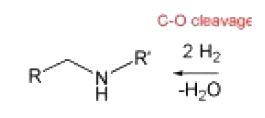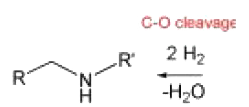RuBP carboxylase, PEPcase, pyruvate dehydrogenase, ATPase, cytochrome oxidase, hexokinase, lactate dehydrogenase. Select/ choose enzymes from the list above which are involved in
(a) Photosyntheis (b) Respirattion.
Both in photosynthesis and respiration
RuBP Carboxylase This is a part of dark reaction of photosythesis. It catalyses the fixing of CO2 in C3 cycle.
PEPcase This is part of photosynthesis of C4 . Plants. It catalyses the reaction of fixing of CO2 to from first stable product oxaloacetate. 4 cabon compound
Pyruvate dehydrogenase It is involved in aerobic and catalyses the reaction of formation of acetyl Co-A from pyruvic acid. It requires the participation of NAD and Co-enzyme-A
Pyruvic acid+Co−A+NAD+Mg2+−−−−−−−−−−−−−−→Pyruvate dehydrogenaseAcetlyCo−A+CO2+NADH+H+
ATPase It is a part of both respiration and photosynthesis . Both these proecess uses electrons transport chain and associated proton pump and ATP synthase as a key part of of process. ETC uses the energy to pump hydrogen ions across a memebrane.
The protons flows back though ATP synthesis , diving the production of ATP.
Cytochrom Oxidase This is involved in both respiration in glycolysis, it catalyses the first reaction i.e., formation glucose -6- phosphate from glucose . It uses one ATP molecules which transfer PO4 group to glucose molecules.

Lactate Dehydrogenase
This enzyme is involved in anaerobic respiration in bacteria Lactobacillus.
Pyruvic acid formed at the end of glycolysis is converted to lactic acid by homo-fermentative lactic acid bacteria. Hydrogen from NADH molecules is transferred to pyruvate is transferred by pyruvate molecules lactic molecules leading formation of acid.
CH3COCOOHPyruvic acid+NADH.Lactate−−−−−−−−→DehydrogenaseC3H6O3Lactic acid+NAD
Topper's Solved these Questions
- RESPIRATION IN PLANTS BOOK - NCERT EXEMPLARCHAPTER - RESPIRATION IN PLANTS EXERCISE - LONG ANSWER TYPE QUESTIONS
5 Videos
- RESPIRATION IN PLANTS BOOK - NCERT EXEMPLARCHAPTER - RESPIRATION IN PLANTS EXERCISE - VERY SHORT ANSWER TYPE QUESTIONS
7 Videos
- PLANT KINGDOMBOOK - NCERT EXEMPLARCHAPTER - PLANT KINGDOMEXERCISE - LONG ANSWER TYPE QUSTIONS
5 Videos
- STRUCTURAL ORGANISATION IN ANIMALSBOOK - NCERT EXEMPLARCHAPTER - STRUCTURAL ORGANISATION IN ANIMALSEXERCISE - long answer type questions
5 Videos
Similar Questions
Match the following and choose the correct option from those given below.
Colume AColume B(A) Molecular oxgen(i)α−Ketoglutaric acid(B) Eletron acceptor(ii) hydrogen acceptor(C) Pyruvate dehydrogenase(iii) cytochrome C(D) Decarboxylation (iv) acetyl Co A
View SolutionMatch the following and choose the correct option from those given below.
ColumnAColumnBA.Molecular oxygeni.α−Ketoglutaric acidB.Electron acceptorii.Hydrogen acceptorC.Pyruvate dehydrogenaseiii.CytochromeCD.Decarboxylationiv.AcetylCoA
View Solution
Knowledge Check
[A] = RuBisCo, [B] = PEPcase, [C] = Decarboxylase, [D] = Dehydrogenase Which of the above given enzymes can catalyze carboxylation reaction?
AA & B bothBC & D bothCOnly ADOnly BRead the passage given below and answer the following questions:
Reduction of carboxylic acids and their derivatives plays an important role in organic synthesis, in both laboratory and industrial processes. Traditionally, the reduction is performed using stochiometric amounts of hydride reagents, generating stochiometric amounts of waste. A much more attractive, atom-economical approach is a catalytic reaction using H2, however, hydrogenation of carboxylic acid derivatives under mild conditions is a very challenging task, with amides presenting the highest challenge among all classes of carbonyl compounds. Very few examples of the important hydrogenation of amides to amines, in which the C-O bond is cleaved with the liberation of water (Scheme 1), were reported. C-O cleavage of amides can also be affected with silanes as reducing agents.

We have now prepared the new, dearomatized, bipyridine-based pincer complex 3, catalyst 3(Here refered as Cat. 3). Remarkably, it efficiently catalyzes the selective hydrogenation of amides to form amines and alcohols (eq 1). The reaction proceeds under mild pressure and neutral conditions, with no additives being required. Since the reaction proceeds well under anhydrous conditions, hydrolytic cleavage of the amide is not involved in this process.

(Balaraman, E., Gnanaprakasam, B., Shimon, L. J., & Milstein, D. (2010). Direct hydrogenation of amides to alcohols and amines under mild conditions. Journal of the American Chemical Society, 132(47), 16756-16758.)
In the following questions, a statement of assertion followed by a statement of reason is given. Choose the correct answer out of the following choices on the basis of the above passage.
Assertion: Aniline can be prepared from suitable amide using catalyst 3
Reason: The use of catalyst 3 is limited to aliphatic amides only.AAssertion and reason both are correct statements and reason is correct explanation for assertion.BAssertion and reason both are correct statements but reason is not correct explanation for assertion.CAssertion is correct statement but reason is wrong statement.DAssertion is wrong statement but reason is correct statement.Read the passage given below and answer the following questions:
Reduction of carboxylic acids and their derivatives plays an important role in organic synthesis, in both laboratory and industrial processes. Traditionally, the reduction is performed using stochiometric amounts of hydride reagents, generating stochiometric amounts of waste. A much more attractive, atom-economical approach is a catalytic reaction using H2, however, hydrogenation of carboxylic acid derivatives under mild conditions is a very challenging task, with amides presenting the highest challenge among all classes of carbonyl compounds. Very few examples of the important hydrogenation of amides to amines, in which the C-O bond is cleaved with the liberation of water (Scheme 1), were reported. C-O cleavage of amides can also be affected with silanes as reducing agents.

We have now prepared the new, dearomatized, bipyridine-based pincer complex 3, catalyst 3(Here refered as Cat. 3). Remarkably, it efficiently catalyzes the selective hydrogenation of amides to form amines and alcohols (eq 1). The reaction proceeds under mild pressure and neutral conditions, with no additives being required. Since the reaction proceeds well under anhydrous conditions, hydrolytic cleavage of the amide is not involved in this process.

(Balaraman, E., Gnanaprakasam, B., Shimon, L. J., & Milstein, D. (2010). Direct hydrogenation of amides to alcohols and amines under mild conditions. Journal of the American Chemical Society, 132(47), 16756-16758.)
In the following questions, a statement of assertion followed by a statement of reason is given. Choose the correct answer out of the following choices on the basis of the above passage.
Assertion: N-methyl ethanamide on reaction with catalyst 3 will yield ethanol and methanamine.
Reason: Use of Catalyst 3 brings about cleavage of C-N bond of amidesAAssertion and reason both are correct statements and reason is correct explanation for assertion.BAssertion and reason both are correct statements but reason is not correct explanation for assertion.CAssertion is correct statement but reason is wrong statement.DAssertion is wrong statement but reason is correct statement.
Match column I with column II and select the correct option from the codes given below
(Column I(Activator element) ,Column II(Enzyme)),(A Mg2+,,(i) Nitrate reductase),(B. Zn2+,(ii). RuBisCO, PEPCase),(C. Mo,(ii). Alcohol dehydrogenase)
View SolutionRead the passage given below and answer the following questions:
Reduction of carboxylic acids and their derivatives plays an important role in organic synthesis, in both laboratory and industrial processes. Traditionally, the reduction is performed using stochiometric amounts of hydride reagents, generating stochiometric amounts of waste. A much more attractive, atom-economical approach is a catalytic reaction using H2, however, hydrogenation of carboxylic acid derivatives under mild conditions is a very challenging task, with amides presenting the highest challenge among all classes of carbonyl compounds. Very few examples of the important hydrogenation of amides to amines, in which the C-O bond is cleaved with the liberation of water (Scheme 1), were reported. C-O cleavage of amides can also be affected with silanes as reducing agents.

We have now prepared the new, dearomatized, bipyridine-based pincer complex 3, catalyst 3(Here refered as Cat. 3). Remarkably, it efficiently catalyzes the selective hydrogenation of amides to form amines and alcohols (eq 1). The reaction proceeds under mild pressure and neutral conditions, with no additives being required. Since the reaction proceeds well under anhydrous conditions, hydrolytic cleavage of the amide is not involved in this process.

(Balaraman, E., Gnanaprakasam, B., Shimon, L. J., & Milstein, D. (2010). Direct hydrogenation of amides to alcohols and amines under mild conditions. Journal of the American Chemical Society, 132(47), 16756-16758.)
In the following questions, a statement of assertion followed by a statement of reason is given. Choose the correct answer out of the following choices on the basis of the above passage.
Assertion: Use of hydride catalyst or hydrogen brings about cleavage of C-O bond in amides.
Reason: Hydride catalyst or hydrogen cause to reduction of amides.
View SolutionRead the passage given below and answer the following questions:
Reduction of carboxylic acids and their derivatives plays an important role in organic synthesis, in both laboratory and industrial processes. Traditionally, the reduction is performed using stochiometric amounts of hydride reagents, generating stochiometric amounts of waste. A much more attractive, atom-economical approach is a catalytic reaction using H2, however, hydrogenation of carboxylic acid derivatives under mild conditions is a very challenging task, with amides presenting the highest challenge among all classes of carbonyl compounds. Very few examples of the important hydrogenation of amides to amines, in which the C-O bond is cleaved with the liberation of water (Scheme 1), were reported. C-O cleavage of amides can also be affected with silanes as reducing agents.

We have now prepared the new, dearomatized, bipyridine-based pincer complex 3, catalyst 3(Here refered as Cat. 3). Remarkably, it efficiently catalyzes the selective hydrogenation of amides to form amines and alcohols (eq 1). The reaction proceeds under mild pressure and neutral conditions, with no additives being required. Since the reaction proceeds well under anhydrous conditions, hydrolytic cleavage of the amide is not involved in this process.

(Balaraman, E., Gnanaprakasam, B., Shimon, L. J., & Milstein, D. (2010). Direct hydrogenation of amides to alcohols and amines under mild conditions. Journal of the American Chemical Society, 132(47), 16756-16758.)
In the following questions, a statement of assertion followed by a statement of reason is given. Choose the correct answer out of the following choices on the basis of the above passage.
Assertion: The use of catalyst 3 is an efficient method of preparation of primary amines
Reason: Use of catalyst 3 is a step down reaction.
View Solution
